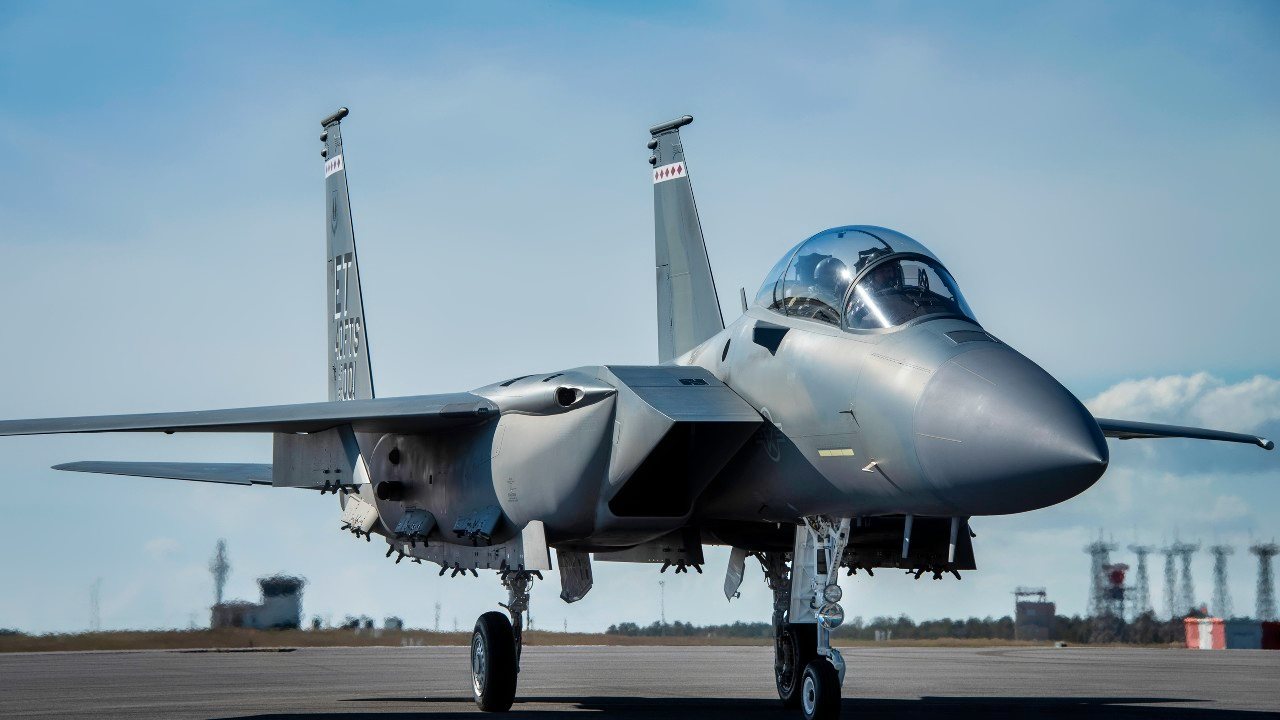Boeing's F-15EX: The Incredible Fighter Jet Israel Wants
The Israelis still want the F-15EX fighter. The Israeli Ministry of Defense officially requested 25 F-15EX fighters from the US last January, but sources suggest that Israel intended to purchase upwards of 50.
The Israelis still want the F-15EX fighter. The Israeli Ministry of Defense officially requested 25 F-15EX fighters from the US last January, but sources suggest that Israel intended to purchase upwards of 50.
“An official Letter of Request (LOR) for the fighters was sent from the Israeli government to the US government,” according to Breaking Defense a few months back. “Letters of request are the first step in the Foreign Military Sale process, after which details on numbers and pricing are negotiated.”
The Israelis are no stranger to purchasing American military hardware; the Americans have been outfitting their Israeli allies for decades with advanced tech, including F-15s, F-16s, and F-35s. But never the F-15EX.
If the deal goes through, the Israelis would typically be on a five-year timeline before they could begin expecting deliveries of the F-15EX. So, 2028. But the Israelis may push the Americans to accelerate the turnaround.
What is the F-15 EX?
According to Boeing, “the F-15EX is a ready-now replacement for the F-15C that includes best-in-class payload, range and speed. Designed to deliver value to the U.S. Air Force, the F-15EX will be backbone fighter for the service – not just today, but for the next several decades.”
Obviously, Boeing’s description is just vague company-speak, meant to promote rather than inform. But what’s telling is the claim that the F-15EX will be relevant for another several decades. The F-15 airframe has already been in service for almost half a century. So, Boeing suggests the F-15 is a one-hundred-year-plus platform. The fact that the Israelis want to make a sizeable purchase of the F-15EX suggests that the airframe will be relevant for a long time.
The F-15EX was developed from the F-15E Strike Eagle. The EX-variant, like the E-variant, is billed as an all-weather multirole strike fighter. The E-variant was previously distinct amongst F-15 variants in that the E was designed for a ground-attack role – a departure from the F-15s initial purpose: strictly providing air superiority. Famously, the F-15 was designed “without a pound for ground,” meaning the jet had zero capacity to attack targets on the ground. The original F-15 was intended solely for engaging targets in the air through aerial combat maneuvering (ACM), more commonly known as dogfighting.

But with the E-variant, the F-15 airframe was adapted to provide ground-attack capabilities. The modification proved successful, and the EX-variant is a continuation of that success.

The Specifications
The F-15EX will have a crew of either one or two (always a pilot and potentially a weapons systems officer in the back seat). They will have a maximum takeoff weight of 81,000 pounds and will rely on 2 General Electric F110-GE-129 afterburning turbofan engines with 17,155 pounds of dry thrust each (29,500 pounds of thrust with afterburner).

The jet will be able to achieve a top speed of 1,650 miles per hour, or Mach 2.5-plus. The combat range is 687 nautical miles. The service ceiling will be upwards of 60,000 feet. And using the big, powerful turbofan engines, the F-15EX will have a 50,000 feet per minute (250 meter per second) rate of climb. The airframe is rated to pull +9 G’s.
In all, the Israelis would be getting a very capable and sophisticated airframe.
About the Author
Harrison Kass is a senior defense writer with over 1,000 articles published. An attorney, pilot, guitarist, and minor pro hockey player, Harrison joined the US Air Force as a Pilot Trainee but was medically discharged. Harrison holds a BA from Lake Forest College, a JD from the University of Oregon, and an MA from New York University. Harrison listens to Dokken.
All images are Creative Commons.


